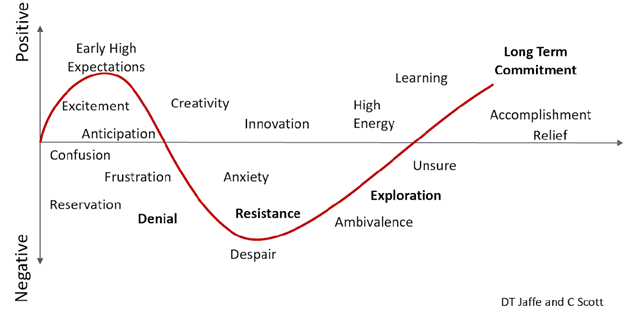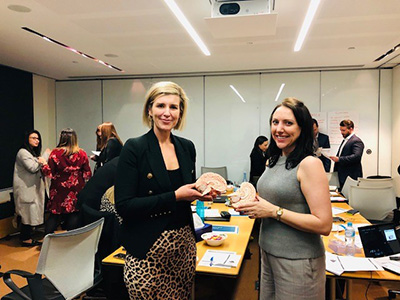Did you know that a staggering 92 percent of people that set goals never actually achieve them? That’s according to research by the University of Scranton in Pennsylvania.
If you want to break the cycle, do what the other 8 percent of goal-setters – the successful ones – do consistently and exceptionally well.
Let me share some of my expertise in behavioural change and goal setting that you may consider.
Early slips do not predict failure. It is how you code and deal with the ‘challenge-response’ when things don’t go to plan. It’s during the challenge-response that we grow and learn the most.
Is it a goal or just a wish?
In my experience about 80% of resolution-makers trade enthusiasm for disappointment by February. Approximately 30% don’t even make it that far, ditching their resolutions before they reach four weeks.
Before you go down that path let me share some of my expertise in behavioural change and resolutions.
Early slips do not predict failure, it is how you code and deal with the ‘challenge-response’ when things don’t go to plan. It’s during the challenge-response when we grow and learn the most.
Course-correcting
In fact, many ultimately successful resolution-setters report that even as they experience them, early slips strengthen their resolutions. The key to success is coming back from those slips stronger than ever, and course-correcting to get yourself on the right path to achieve your goals.
Course-correcting applies to many aspects of our lives, from health, career and family to business and finances, among others.
Think about the countless hours elite athletes spend working out the kinks in their game or in rehab after an injury to get back on track to peak performance. Businesses do the same, whether they’re making small tweaks to a business plan or preparing to undergo a major restructure.
A new approach
What’s needed is a new mindset (THINKING) approach to create agile planning and goal setting. This new mindset taps into both hemispheres of the brain, leveraging our deep thinking.
Deep thinking (both conscious and subconscious) and promotes continual evaluation, learning and evolution of goals/ plans.
Brains are prediction machines where approximately 42% of thoughts are spent predicting what’s going to happen. Our brains crave certainty and some more than others – What is your brain like?
Business strategy and achieving goals
Did you know: 9 out of 10 businesses have a strategy but don’t achieve it because leaders fail to execute it successfully through their people [Institute for Performance Management]. I am surprised by this statistic and have proven ways to bridge this gap.
The biggest learnings for goal setting and planning for success in my experience are:
- Articulating your WHY – The purpose of the strategy or mission that captures the hearts and minds of your people and clients outside of the leadership team, that creates passionate followers. I recommend viewing Simon Sinek’s Start with WHY golden circle that may help your thinking.
- Setting meaningful KPI’s (Key Performance Indicators) – these need to reflect the right behaviours that align to achieving your WHY.
- Planning for possible obstacles and challenges as part of the plan – We tend to plan in a straight line from A to B. And yet we know a plan is unlikely to go to plan, meaning it is not going to be a straight line.
When I worked in the IT security industry we created an incident response plan to effectively deal with security breaches and make a well-informed decision.
As part of the occupation health and safety committee, we would come to together to proactively plan to reduce incidents happening in the first place.
We rehearsed how to deal with it if it occurred like a fire drill rehearsal. We need a proactive planning committee to mitigate obstacles and have an incident response procedure to ensure we are making well-informed decisions that get us back on track.
See below change curve tips to navigate common obstacles more effectively. - Prioritise the priorities – based on outcomes that align with the Goals WHY Mission. Build reflection time to think about what’s working and not working, so you tweak your plan and reset the priorities.
- Chunk time – Where and when do you do your best thinking? Protect this time to do your strategic planning, analysing, problem-solving and strategic decision making. This is the time when your thinking is clear. From here you can break down your goals into smaller chunks of 30, 60 and 90 days.
- Reward State – The brain receives hits of dopamine (the brain’s natural happy drug) when you are in a reward state. Plan and celebrate the little wins along the way. Build-in positive intrinsic rewards into your 30, 60, 90-day chunks. Remember that positive reinforcement and encouragement from others can make a huge difference with our motivation levels to achieve goals.
- Leverage both hemispheres of the brain for whole-brain goal setting – S.M.A.R.T (Specific, measurable, achievable, realistic, timeframe) goals are good for the left side of the brain. S.A.F.E (See it, Accept it, Feel it, Express it) is used for tapping into the right side of the brain for an emotional goal response. Combining the whole brain with goal setting gains powerful results. McKinsey key research shows: A sustainable society asks for whole-person leadership – click here to read the article.
Tips for managing the change curve to achieve goals for effective bounce back

You may be familiar with the change curve. What we go through with dealing with change and obstacles to reach our goals and fulfil our purpose is normal. It can, however, take a lot of energy.
With our brain being a hungry energy resource this is why it doesn’t like change, because it is exhausting. Tapping into Neuroplasticity – our brain’s ability to create new wiring – is key to making long-term commitment to change.
The Stockland Legal Team meeting their goals

Meeting their goals around effectively communicating and engaging stakeholders in a collaborative and meaningful way, with other departments seeing them as a value add.
Are you curious to learn more about achieving goals?

I have a podcast series created in conjunction with the Australian Industry Group, including ‘Why change hurts’ that discusses the change curve and how to effectively enable brains for change in the digital age.
Individuals, teams and companies can effectively reach their goals and effectively cope with change.
Find out how I can help you achieve success today and into the future.
Are you curious to learn more about achieving goals?

I have a podcast series created in conjunction with the Australian Industry Group, including ‘Why change hurts’ that discusses the change curve and how to effectively enable brains for change in the digital age.
Individuals, teams and companies can effectively reach their goals and effectively cope with change.
Find out how I can help you achieve success today and into the future.

